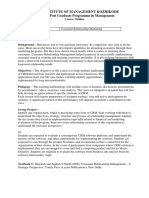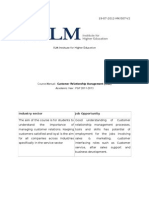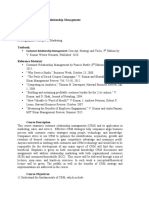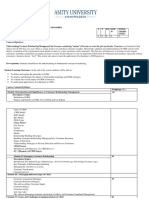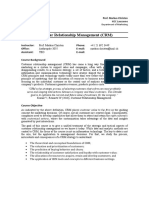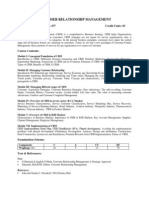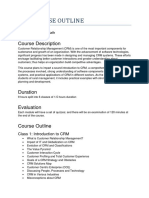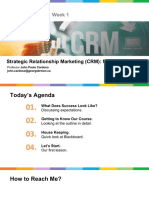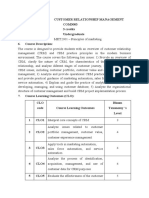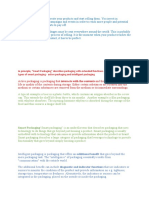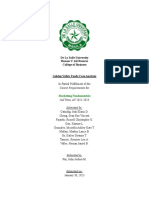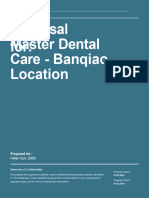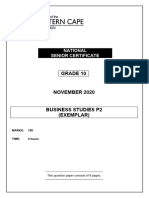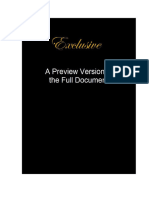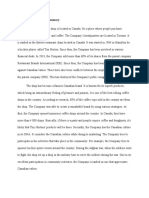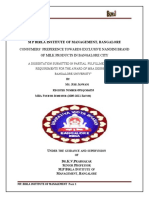0% found this document useful (0 votes)
215 views5 pagesCustomer Relationship Management (C.R.M) : Sharif University of Technology Graduate School of Management & Economics
This document provides information about a Customer Relationship Management course offered at Sharif University of Technology. The course will be taught on Sundays and Tuesdays from 11:00-12:30. It will examine CRM strategies and technologies used to manage customer relationships. Students will learn about CRM concepts, metrics, technologies and best practices. They will complete assignments including case studies, papers, and a final project and presentation analyzing a company's CRM strategy or customer data. Students will be evaluated based on participation, quizzes, assignments, and a final exam.
Uploaded by
nrkaramiCopyright
© Attribution Non-Commercial (BY-NC)
We take content rights seriously. If you suspect this is your content, claim it here.
Available Formats
Download as DOCX, PDF, TXT or read online on Scribd
0% found this document useful (0 votes)
215 views5 pagesCustomer Relationship Management (C.R.M) : Sharif University of Technology Graduate School of Management & Economics
This document provides information about a Customer Relationship Management course offered at Sharif University of Technology. The course will be taught on Sundays and Tuesdays from 11:00-12:30. It will examine CRM strategies and technologies used to manage customer relationships. Students will learn about CRM concepts, metrics, technologies and best practices. They will complete assignments including case studies, papers, and a final project and presentation analyzing a company's CRM strategy or customer data. Students will be evaluated based on participation, quizzes, assignments, and a final exam.
Uploaded by
nrkaramiCopyright
© Attribution Non-Commercial (BY-NC)
We take content rights seriously. If you suspect this is your content, claim it here.
Available Formats
Download as DOCX, PDF, TXT or read online on Scribd
/ 5




